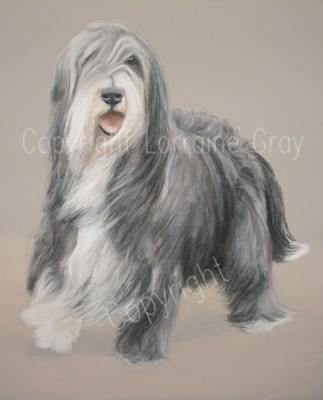
How do you tell?
Adult Bearded Collies can be predominantly white with colored markings, but in a show ring, this isn’t acceptable. The four main colors (with or without white markings) that are accepted are black, blue, brown, and fawn. When all four colors show up in the same litter, it’s colorfully called a “rainbow litter,” but since most Bearded Collie puppies are born quite dark or black, how does anyone know what color a Beardie puppy is going to become?
Experienced heritage breeds know that the actual color determination of a Beardie can be made first by the color of the pigment of her nose leather and lips. Blue dogs have blue noses, fawn dogs have fawn noses, and so on. A new breeder, however, may not realize that somewhere around the age of two months old, the coat of a Bearded Collie pup will also start paling, or “greying.” A black puppy can fade to any shade of dark, a chocolate brown baby can fade to cream, and puppies born blue or fawn can turn almost white. The process usually starts around the puppy’s eyes making the baby look like s/he’s wearing glasses. It can be quite a jolt to the first time breeder who lacks a mentor who’d tell them to also look at the tips of the dogs ears since it doesn’t pale along with the rest of the dog.
By the time the dog 9 to 12 months old, the fading can cover the whole dog. Some youngsters fade so much that their white markings can’t be told apart from their color. This is because most Beardies carry the touched by the gene Greying [G], is a dominant gene.
To see the fabulous coat color drama, visit this page for “before” and “after” photos.
Bearded Collie in pastel by Lorraine Gray. Find her marvelous work in oil and pastel here.
